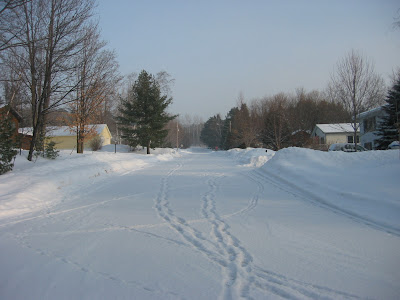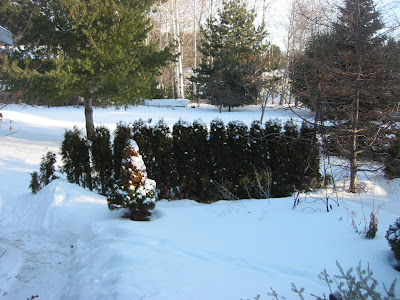
 Saturday, 7:45 AM. –15 degrees, wind W, calm, skies are clear, the barometer predicts partly sunny weather.
Saturday, 7:45 AM. –15 degrees, wind W, calm, skies are clear, the barometer predicts partly sunny weather.This is an truly arctic blast, I almost expect to see the returning glacier bearing down on Bayfield out of the frozen north. Dressed as usual except for an added scarf around my neck and face, I was quite comfortable walking, and Lucky didn’t do any three-legged hop.
Anyway, we are persistent, speaking of which, the old black willow (Salix nigra) on Ninth Street persists, although torn almost limb from limb by the winds, and probably blown over a couple of times in its history to boot. I have seen huge red oaks topple in still air, rotted at the roots, to die vaingloriously, while the willow like the cat has nine lives at least, and is far too stubborn to die.
Roxy the black lab is also persistent, her retriever instinct overflowing within, bringing anything remotely able to be thrown to anyone foolish enough to play her game. She will beg and pester her playmate all day long if he doesn’t retreat into the sanctity of the house. She is indefatigable as Rocky sitting exhausted and bloody in his corner exclaiming “I got this guy right where I want him.” Now that’s persistence!




















































